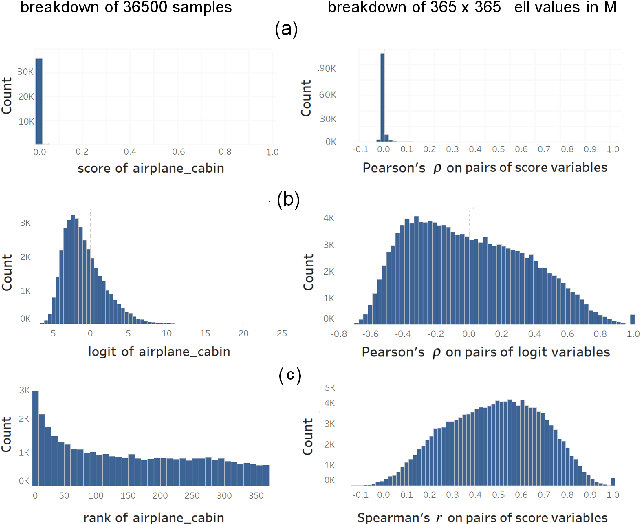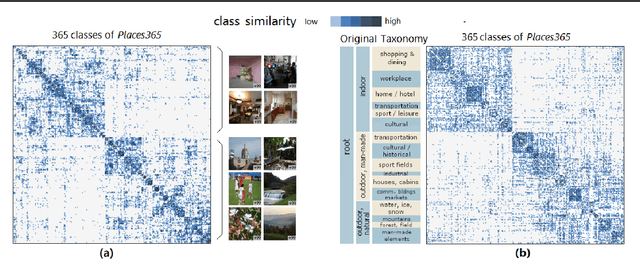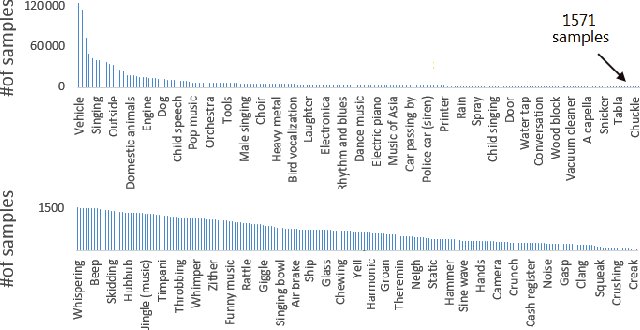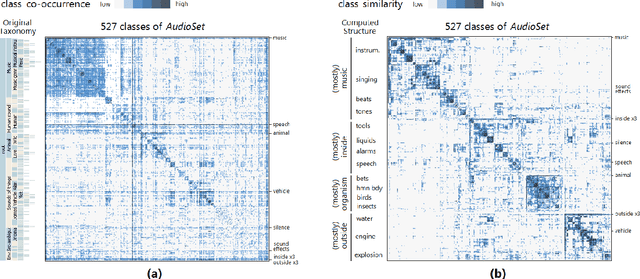Zeng Dai
ESCAPE: Countering Systematic Errors from Machine's Blind Spots via Interactive Visual Analysis
Mar 16, 2023Abstract:Classification models learn to generalize the associations between data samples and their target classes. However, researchers have increasingly observed that machine learning practice easily leads to systematic errors in AI applications, a phenomenon referred to as AI blindspots. Such blindspots arise when a model is trained with training samples (e.g., cat/dog classification) where important patterns (e.g., black cats) are missing or periphery/undesirable patterns (e.g., dogs with grass background) are misleading towards a certain class. Even more sophisticated techniques cannot guarantee to capture, reason about, and prevent the spurious associations. In this work, we propose ESCAPE, a visual analytic system that promotes a human-in-the-loop workflow for countering systematic errors. By allowing human users to easily inspect spurious associations, the system facilitates users to spontaneously recognize concepts associated misclassifications and evaluate mitigation strategies that can reduce biased associations. We also propose two statistical approaches, relative concept association to better quantify the associations between a concept and instances, and debias method to mitigate spurious associations. We demonstrate the utility of our proposed ESCAPE system and statistical measures through extensive evaluation including quantitative experiments, usage scenarios, expert interviews, and controlled user experiments.
Interactive Visual Pattern Search on Graph Data via Graph Representation Learning
Feb 18, 2022



Abstract:Graphs are a ubiquitous data structure to model processes and relations in a wide range of domains. Examples include control-flow graphs in programs and semantic scene graphs in images. Identifying subgraph patterns in graphs is an important approach to understanding their structural properties. We propose a visual analytics system GraphQ to support human-in-the-loop, example-based, subgraph pattern search in a database containing many individual graphs. To support fast, interactive queries, we use graph neural networks (GNNs) to encode a graph as fixed-length latent vector representation, and perform subgraph matching in the latent space. Due to the complexity of the problem, it is still difficult to obtain accurate one-to-one node correspondences in the matching results that are crucial for visualization and interpretation. We, therefore, propose a novel GNN for node-alignment called NeuroAlign, to facilitate easy validation and interpretation of the query results. GraphQ provides a visual query interface with a query editor and a multi-scale visualization of the results, as well as a user feedback mechanism for refining the results with additional constraints. We demonstrate GraphQ through two example usage scenarios: analyzing reusable subroutines in program workflows and semantic scene graph search in images. Quantitative experiments show that NeuroAlign achieves 19-29% improvement in node-alignment accuracy compared to baseline GNN and provides up to 100x speedup compared to combinatorial algorithms. Our qualitative study with domain experts confirms the effectiveness for both usage scenarios.
Visualizing Classification Structure in Deep Neural Networks
Jul 12, 2020



Abstract:We propose a measure to compute class similarity in large-scale classification based on prediction scores. Such measure has not been formally pro-posed in the literature. We show how visualizing the class similarity matrix can reveal hierarchical structures and relationships that govern the classes. Through examples with various classifiers, we demonstrate how such structures can help in analyzing the classification behavior and in inferring potential corner cases. The source code for one example is available as a notebook at https://github.com/bilalsal/blocks
 Add to Chrome
Add to Chrome Add to Firefox
Add to Firefox Add to Edge
Add to Edge